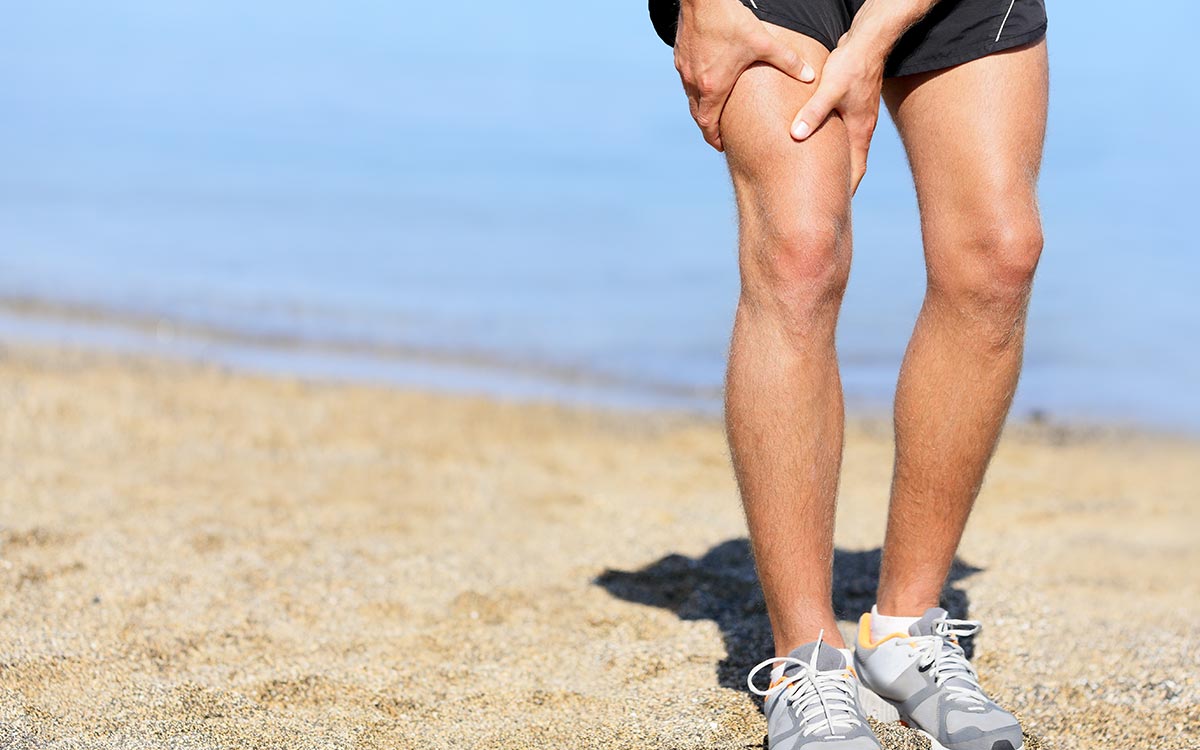Osteopathy: what is it and how can it benefit runners?
As osteopathy grows in popularity, we spoke with runner and osteopath Austen Forbes to learn the ins and outs of this type of therapy

As a runner, aches, pains and the occasional injury are almost inevitable. Some of these issues can be resolved with a few days off and some light stretching, while others require the help of a professional. Luckily, there is a wide variety of different practitioners who can use their expertise to get you back on your feet, including physiotherapists, massage therapists and chiropractors. Over the last decade, a new type of therapy has become increasingly popular that you may not have considered: osteopathy. We spoke with Austen Forbes, a runner and manual osteopathic practitioner to learn what osteopathy is and why runners should consider adding it to their injury prevention or recovery arsenal.

RELATED: Are you experiencing a COVID-related injury?
Forbes explains that osteopathy views the body as a whole unit, and each structure is related and can impact each other. Osteopaths use their understanding of the relationship between your body’s structure and function in order to optimize it’s natural ability to regulate and heal, which provides them with an infinite number of methods they could use to treat each unique individual.
“This is especially important because a lot of clients have the same ‘problems’ but for different reasons,” Forbes says. “Every individual is different.”
How can osteopathy benefit runners?
Just like any type of therapy, Forbes says osteopathy can reduce pain, increase mobility in athletes and help heal and prevent injuries. He explains that just like athletes from any sport, runners are going to have their own set of biomechanical issues, causing them to overuse certain muscles and certain movement patterns. Osteopaths are trained to use their understanding of biomechanics to locate areas of your body that are not functioning optimally, and work on them in order to improve both your health and your performance.
In many cases, when you’re experiencing pain in one area, the cause of that pain is likely coming from somewhere else that is not functioning well. This is where osteopathy really shines. Forbes explains that 80 per cent of a practitioner’s job is investigation, and if you can locate both healthy and dysfunctional areas of the body, you should be able to heal those problem spots.
RELATED: The do’s and don’ts of recovery with physiotherapist Chris Napier
“Osteopathic practitioners, or any practitioners, who employ a principled understanding of structure and function are more equipped to access the nuanced relationships of any individual’s mechanics,” he says.
Essentially, the goal of osteopathy is to get your entire body moving properly. This makes your body more efficient so you waste less energy, and can instead allocate that energy toward healing and recovery. Ultimately, this means fewer injuries, less time off and better performance.
What can you expect when you visit an osteopath?
During your first appointment, Forbes says that your osteopath will spend a lot of time listening and asking questions about not only your injury or problem, but about your general health and other medical care you’re receiving or medications you’re taking. The purpose of this is to check for more serious medical conditions that they can’t treat, and to recommend you visit your doctor or go to the hospital if necessary.
They will then do an assessment of your entire body in order to understand how your body moves, to look for other areas of dysfunction and to check the health of your joints, tissues and ligaments. They will do this by moving parts of your body themselves as well as having you go through different movements on your own.

How often should you see an osteopath?
That depends on your goals. Forbes says that if you’re a casual runner and your results or performance are not a priority, you only need to see an osteopath when you have a problem. If your goal is to improve performance, you may want to consider setting up regular appointments. This is because consistency is a major factor in your training, and the only way to remain consistent is to prevent injuries from happening in the first place. For these more serious runners, Forbes recommends trying to see a practitioner once a week, if possible.
Finally, Forbes points out the onus is on the athlete to figure out which type of therapy they want to pursue. He says that different types of therapy use different ways to approach a problem, but the end goal is the same: restoring function and health to your body. These days, many practitioners overlap in their philosophies and approach, and so the most important thing is that you find a practitioner who will spend the time investigating how your body functions in order to get to the root of your problem and get you back on the road.


